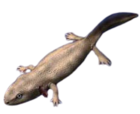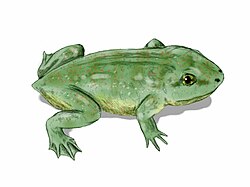| Potamotyphlus kaupii | |
|---|---|
 | |
| Scientific classification | |
| Kingdom: | Animalia |
| Phylum: | Chordata |
| Class: | Amphibia |
| Order: | Gymnophiona |
| Clade: | Apoda |
| Family: | Typhlonectidae |
| Genus: | Potamotyphlus Taylor, 1968 |
| Species: | P. kaupii |
| Binomial name | |
| Potamotyphlus kaupii (Berthold, 1859) | |
 | |
Potamotyphlus kaupii (also known as Kaup's caecilian) is a species of amphibian in the family Typhlonectidae. It is monotypic within the genus Potamotyphlus. It is found widely in the Amazon Basin and the Guianas in South America, [2] and is known to occur in Brazil, Colombia, Ecuador, Peru, Venezuela, and possibly Bolivia. [1] It is an entirely aquatic species and typically ranges between 30 and 60 cm (12–24 in) in length. [3]
Their most common causes of death are dermatitis and skin lesions. The chytrid fungus Batrachochytrium dendrobatidis , can also threaten them, as it does to many other amphibian biodiversity all over the world. [4]




